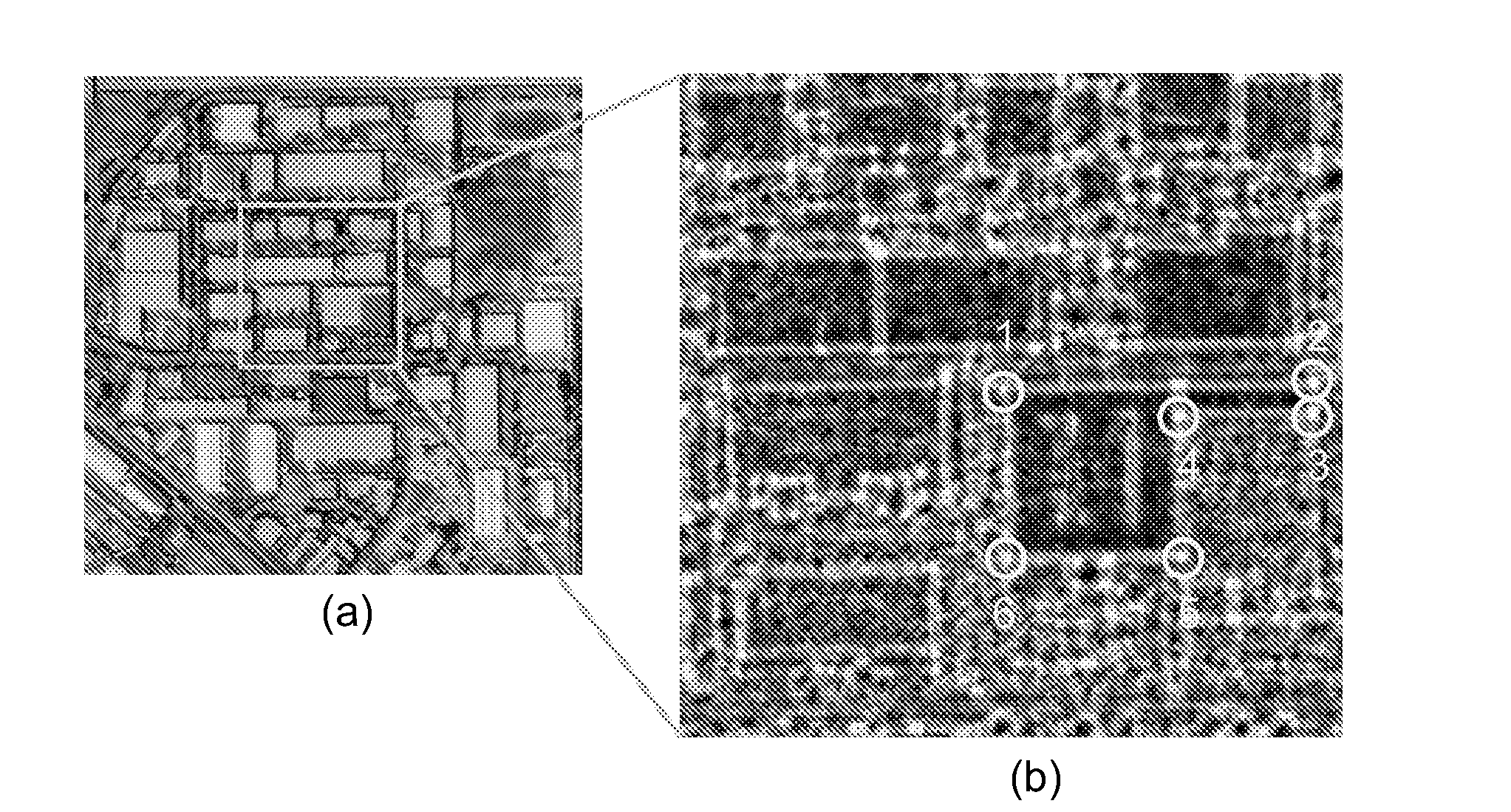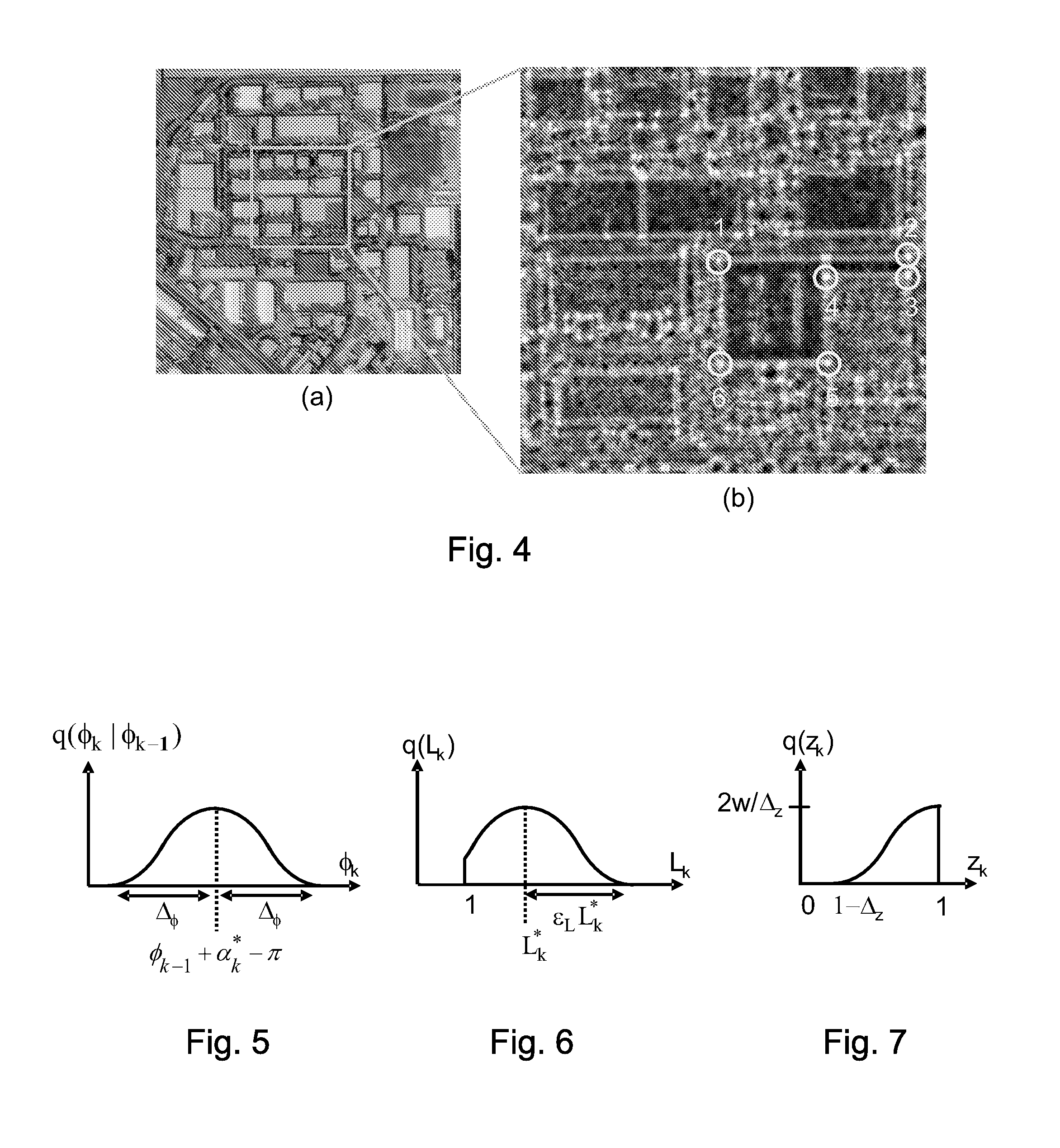Method and System for detecting polygon Boundaries of structures in images as particle tracks through fields of corners and pixel gradients
a technology of polygon boundaries and particle tracks, applied in image analysis, image enhancement, instruments, etc., can solve the problems of missing polygons altogether, methods that cannot efficiently accommodate polygon size variations,
- Summary
- Abstract
- Description
- Claims
- Application Information
AI Technical Summary
Problems solved by technology
Method used
Image
Examples
Embodiment Construction
1. Introduction
[0023]The present invention is a stochastic sampling approach using particle filters to detect polygons of fixed shape and variable size in images, especially polygon-shaped man-made structures, objects, landmarks, etc. in overhead imagery, such as for example the roofs of buildings and vehicles. In particular, a sequential Monte Carlo (SMC)) sampling approach is used to track polygon boundaries through 3D arrays of corner model similarity values / scores (and preferably 2D arrays of thresholded corner best matches derived from the 3D arrays) which are pre-computed across all possible corner / vertex locations and orientations in the image. For each polygon match, the method of the present invention combines many attempts based on SMC sampling to track a single polygon boundary, and is not based on single attempts to match polygon models to images as in other methods. This is illustrated in FIG. 8, showing five SMC boundary tracks (shown as dashed arrows), and one blended...
PUM
 Login to View More
Login to View More Abstract
Description
Claims
Application Information
 Login to View More
Login to View More - R&D
- Intellectual Property
- Life Sciences
- Materials
- Tech Scout
- Unparalleled Data Quality
- Higher Quality Content
- 60% Fewer Hallucinations
Browse by: Latest US Patents, China's latest patents, Technical Efficacy Thesaurus, Application Domain, Technology Topic, Popular Technical Reports.
© 2025 PatSnap. All rights reserved.Legal|Privacy policy|Modern Slavery Act Transparency Statement|Sitemap|About US| Contact US: help@patsnap.com



